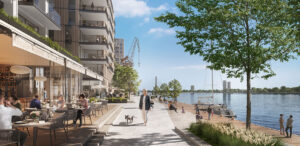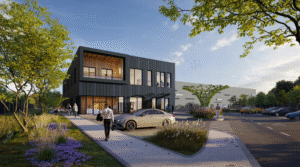Riga
The highest number of transactions in Riga occurred in the second half of the year, particularly during the autumn months. This trend is driven by the end of the holiday season and the return to daily routines when transactions postponed over the summer are finalized. In August, the number of sales advertisements reached the second-highest level of the year, with 5,395 listings. This figure declined in the following months, reflecting the transaction momentum illustrated in the chart on the left.
Rental activity also fluctuated during this period. In August, approximately 2,500 apartments were available for rent, rising to around 3,000 in September, as the autumn season prompts residents to list their rental properties in response to the influx of people moving to the city for work or study.
Overall, 2024 has been more active in terms of transactions compared to the previous year, particularly towards the end of the year. In 2023, transaction volumes declined across all neighbourhoods and apartment types compared to the corresponding periods of the previous year. However, in 2024, transaction numbers have improved, surpassing those of 2023. The only exceptions are a marginal decline in transactions for apartments in nonrenovated historical buildings and a slightly more pronounced decrease in transactions for new developments, attributed to limited supply and relatively high prices.
Supply in the new projects segment was almost constant throughout the year, fluctuating between 1,350 and 1,600 available apartments each month. Accordingly, apartments in new projects accounted for around a third of all apartment listings on a constant monthly basis.
At the beginning of the year, the selling price of new project listings on the first market was around €2,770/m2, while in actual transactions it was around €2,510/m2. Secondary market prices for new projects in the neighbourhoods were around the €2,000/m2 mark, but higher in the centre – around €2,580/m2. Overall, average prices in listings have not changed much over the year, staying around €2800/m2 all the time, but in transactions they have risen to around €2,700/m2, narrowing the gap between asked and actual prices.
In November, the average price per square metre was €2,775 in the listings and €2,750 in the transactions, with the gap really narrowing to a minimum. In October, for example, transaction prices were even higher than advertised prices. At the end of the year, the price per square metre in the secondary market for new projects in the neighbourhoods was €2,060, while in the centre it rose to €3,010.
It is paradoxical that the gap between prices in advertisements and actual transactions has narrowed, as there is a very large gap between real and transaction prices, with around 50% of homes being sold for less than €35,000 and some for as little as €1, which are most likely donations.













